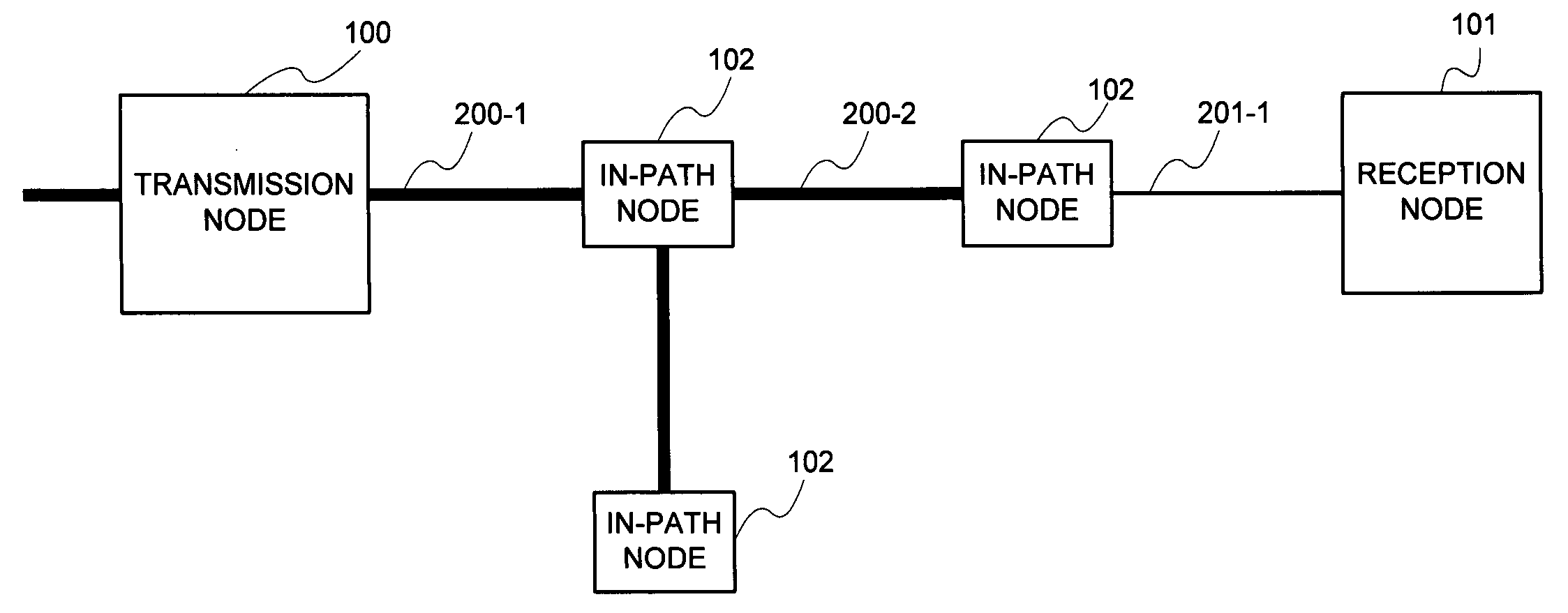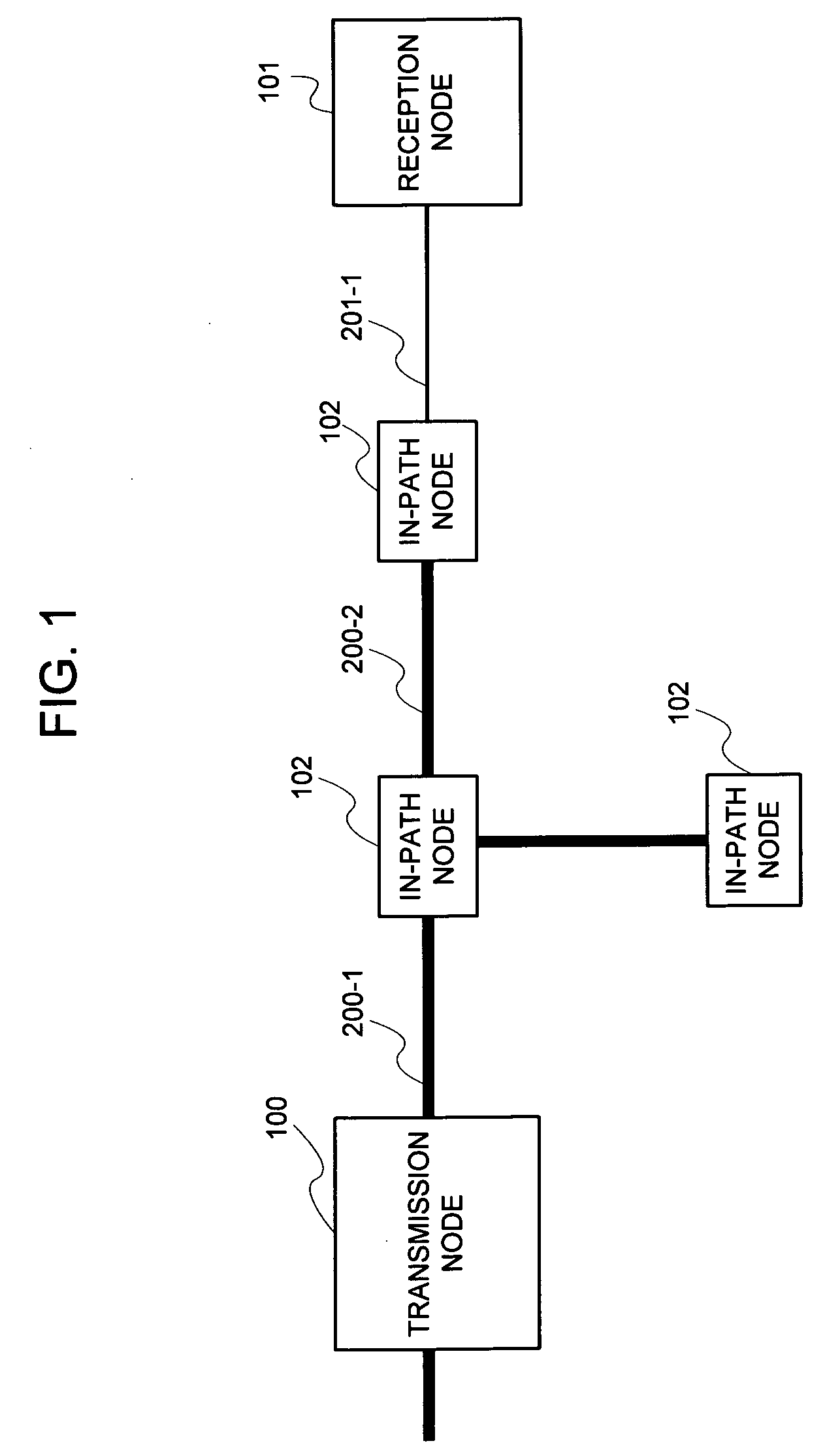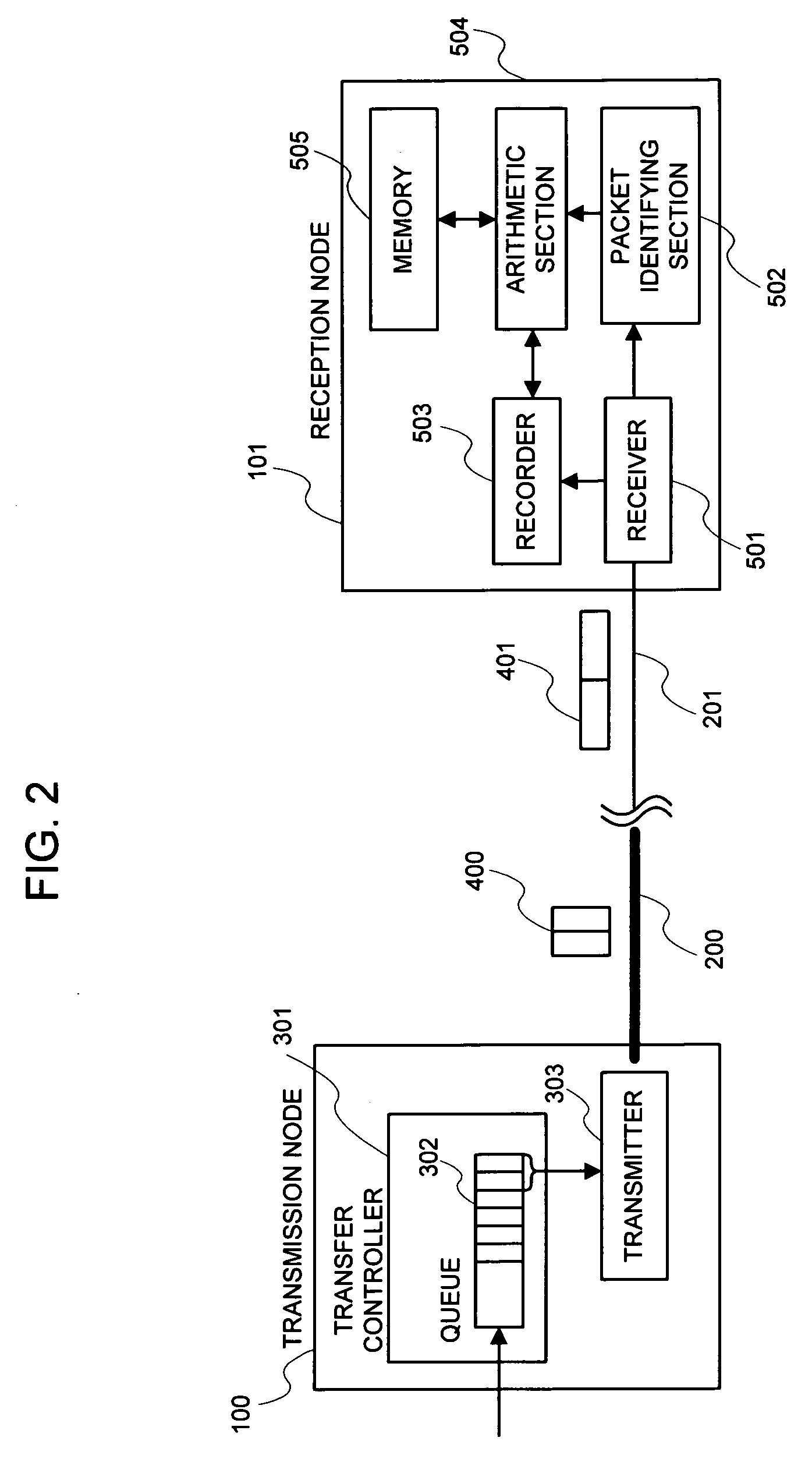Speed calculation system
a technology of speed calculation and communication path, applied in data switching networks, frequency-division multiplexes, instruments, etc., can solve the problems of reducing the bandwidth of communication caused by the probe packet, and so as to achieve the effect of reducing the communication bandwidth
- Summary
- Abstract
- Description
- Claims
- Application Information
AI Technical Summary
Benefits of technology
Problems solved by technology
Method used
Image
Examples
embodiment 1
[0104]The embodiment 1 in the present invention will be explained. FIG. 2 is a detailed view of the system of the present invention.
[0105]Upon making a reference to FIG. 2, the embodiment of the present invention is configured of the transmission node 100 and the reception node 101. Further, the transmission node 100 and the reception node 101 are connected by means of a high-speed link 200 and a low-speed link 201, being a path that is an object of speed calculation respectively.
[0106]The transmission node 100 is configured of a transfer controller 301 and a transmitter 303.
[0107]The transfer controller 301 receives the data packet that arrives at a random timing. This so-called packet is a data packet of which a payload portion has the actual data inserted. The received data packet is filed in a queue 302, which the transfer controller 301 has, for the time being. Further, the transfer controller 301 groups at least two data packets and transfers the data packets to the transmitte...
embodiment 2
[0122]In the above-mentioned embodiment 1, the case of placing no qualification as to which packet group, out of the grouped data packets, was employed for the probe, was explained. That is, all data packets may be grouped and employed for the probe, and the probe information may be inserted into a certain proportion of the data packets out of all data packets. However, as a matter of fact, it is also thinkable that no packet is input for a long time. Thereupon, in the second embodiment, the system allowing the speed calculation of the path to be continued also in such a case will be explained.
[0123]FIG. 5 is a configuration view in the embodiment 2. Additionally, the identical number is affixed to the component similar to that of the foregoing embodiment, and detailed explanation is omitted.
[0124]A transfer controller 301 includes a dummy generator 304, a dummy timer 306, and a dummy timer 307 in addition to the components explained in the foregoing embodiment.
[0125]In a case where...
embodiment 3
[0139]In the foregoing embodiment, the case of connecting the transmission node 100 and the reception node 101 by means of a singular path that was an object of speed calculation was explained.
[0140]In the embodiment 3, the case where a plurality of the paths each of which is an object of speed calculation exist between the transmission node and the reception node will be explained.
[0141]FIG. 7 is a view illustrating a network in a case of calculating the speed of plural paths. Additionally, the identical number is affixed to the component similar to that of the foregoing embodiments, and detailed explanation is omitted.
[0142]Upon making a reference to FIG. 7, the embodiment of the present invention is configured of a transmission node 120 and a reception node 121, and the transmission node 120 and the reception node 121 are connected by means of a plurality of the paths each of which is an object of speed calculation. Of these paths, one path is a path including a high-speed link 2...
PUM
 Login to View More
Login to View More Abstract
Description
Claims
Application Information
 Login to View More
Login to View More - R&D
- Intellectual Property
- Life Sciences
- Materials
- Tech Scout
- Unparalleled Data Quality
- Higher Quality Content
- 60% Fewer Hallucinations
Browse by: Latest US Patents, China's latest patents, Technical Efficacy Thesaurus, Application Domain, Technology Topic, Popular Technical Reports.
© 2025 PatSnap. All rights reserved.Legal|Privacy policy|Modern Slavery Act Transparency Statement|Sitemap|About US| Contact US: help@patsnap.com



